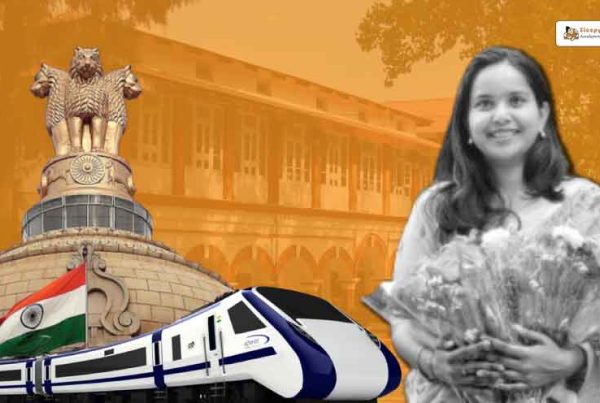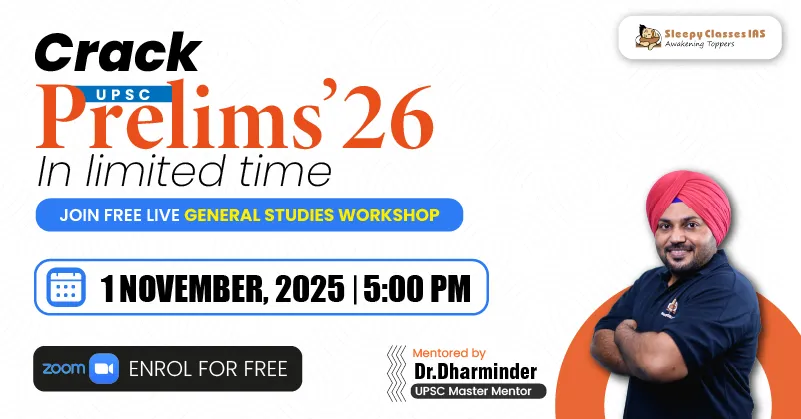Question 1
INTERNATIONAL RELATIONS | Defence Technology and Geopolitical Implications
Indian Express
Consider the following statements regarding First-Person View (FPV) drones and their strategic use in the Ukraine-Russia conflict as of June 2025:
- FPV drones, used in Ukraine’s “Operation Spider’s Web,” are cost-effective, with an estimated cost of around $500 per unit when equipped with explosives.
- FPV drones have a long operational range of over 4,000 kilometers, enabling Ukraine to strike deep into Russian territory.
- China dominates the global supply chain for FPV drone components, including lithium-ion batteries and chips, posing risks to countries reliant on these imports.
- The use of FPV drones in the Ukraine-Russia conflict highlights the growing role of unmanned aerial vehicles in modern warfare, reducing the need for ground troops.
Which of the above statements are correct?
(a) 1, 2, and 4 only
(b) 2 and 3 only
(c) 1, 3, and 4 only
(d) 1 and 4 only
Solution & Detailed Explanation
Answer: (c) 1, 3, and 4 only
Detailed Explanation
Evaluation of Statements
- Statement 1: FPV drones, used in Ukraine’s “Operation Spider’s Web,” are cost-effective, with an estimated cost of around $500 per unit when equipped with explosives.
This statement is accurate. The article cites a Reuters report stating that the cost of an FPV drone equipped with a payload, such as an explosive device, can be as low as $500 (approximately Rs 42,000). It further confirms that FPV drones were employed in Ukraine’s “Operation Spider’s Web,” a meticulously planned attack involving 117 drones targeting Russian military facilities. The low cost of these drones compared to conventional artillery systems underscores their cost-effectiveness, making them a viable option for asymmetric warfare strategies. - Statement 2: FPV drones have a long operational range of over 4,000 kilometers, enabling Ukraine to strike deep into Russian territory.
This statement is incorrect. The article explicitly notes that FPV drones have a limited operational range of “a few kilometres.” While the attack targeted regions over 4,000 kilometers from the Ukraine-Russia border, such as Russia’s far east, the article explains that the drones were smuggled into Russia and concealed in “mobile wooden houses” before being launched locally. This logistical strategy, rather than the drones’ range, enabled the deep strikes. The article mentions that reconnaissance drones with longer ranges were used initially to survey target areas, further indicating that FPV drones themselves lack long-range capabilities. - Statement 3: China dominates the global supply chain for FPV drone components, including lithium-ion batteries and chips, posing risks to countries reliant on these imports.
This statement is accurate. The article references a Center for Strategic & International Studies report highlighting China’s leadership in commercial drone production, particularly through DJI Technology Company, which holds an 80% share of the global consumer drone market. It also notes China’s dominance in producing essential drone components, such as small lithium-ion batteries, with Contemporary Amperex Technology Company being the largest battery maker by capacity. The article points out that many chips used in FPV drones are sourced from China, which has threatened export controls affecting Ukraine, underscoring the supply chain risks for nations dependent on these imports. - Statement 4: The use of FPV drones in the Ukraine-Russia conflict highlights the growing role of unmanned aerial vehicles in modern warfare, reducing the need for ground troops.
This statement is correct. The article emphasizes the increasing use of drones in conflicts globally, stating that they “minimise the risk to human life by reducing the number of boots on the ground.” In the context of the Ukraine-Russia conflict, FPV drones have been pivotal, with a NATO official cited in a 2024 Foreign Policy report noting that over two-thirds of Russian tanks destroyed recently were hit by FPV drones. The article also describes FPV drones as “one of the most potent weapons” in the conflict, highlighting their precision and effectiveness, which aligns with the broader trend of unmanned aerial vehicles reshaping modern warfare.
Question 2
INTERNATIONAL RELATIONS | India’s Foreign Policy and India-Pakistan Relations
Indian Express
Consider the following statements regarding India’s foreign policy stance and the role of the United States in India-Pakistan relations:
- India’s opposition to hyphenation with Pakistan stems from its aim to be recognized as a global power independent of regional conflicts.
- During the 1962 India-China war, the US provided military supplies to India but used this aid to urge India to negotiate with Pakistan on Kashmir.
- In the 1971 India-Pakistan war, the US supported India’s position, facilitating the creation of Bangladesh.
- The US shifted towards supporting India during the 1999 Kargil war, publicly condemning Pakistan’s violation of the Line of Control.
Which of the above statements are correct?
(a) 1, 2, and 3 only
(b) 2 and 4 only
(c) 1, 2, and 4 only
(d) 1 and 3 only
Solution & Detailed Explanation
Answer: (c) 1, 2, and 4 only
Detailed Explanation
- Statement 1: India’s opposition to hyphenation with Pakistan stems from its aim to be recognized as a global power independent of regional conflicts.
This statement is correct. The article articulates India’s resistance to being hyphenated with Pakistan, noting that such a framework equates the two nations, which India views as incompatible with its status as a democratic and economically significant state. It states: “India’s objection to this treatment broadly are — such a framing puts India and Pakistan on the same level when the two parties are not comparable actors… and that India’s identity, as a democratic country and significant economy, can’t be tied to Pakistan’s.” India’s strategic objective is to engage with the international community as a global power, distinct from its regional disputes, a stance reinforced by its response to US President Donald Trump’s remarks in 2025. - Statement 2: During the 1962 India-China war, the US provided military supplies to India but used this aid to urge India to negotiate with Pakistan on Kashmir.
This statement is accurate. According to the article, during the 1962 India-China war, “the US helped India, airlifting military supplies. However, it used the goodwill thus generated to get together with the UK and pressure India to talk to Pakistan.” This is substantiated by a quote from US Undersecretary of State Chester Bowles, who admitted: “We had… seized upon India’s acute need for US assistance as a lever to force India to make concessions to the Pakistanis in regard to Kashmir.” This demonstrates the US’s strategic use of military aid to influence India’s negotiations with Pakistan. - Statement 3: In the 1971 India-Pakistan war, the US supported India’s position, facilitating the creation of Bangladesh.
This statement is incorrect. The article explicitly states that during the 1971 India-Pakistan war, “the US backed Pakistan most forcefully and publicly, even dispatching warships towards the Bay of Bengal.” It further notes that this support, driven by Pakistan’s role in fostering US-China diplomatic relations, led to a decline in US prestige in India, as it was perceived as endorsing “the brutality of the Pakistani regime’s actions.” Historical records from the US Department of State’s Office of the Historian confirm that the US aligned with Pakistan, not India, during this conflict, contradicting the notion that it facilitated Bangladesh’s creation. - Statement 4: The US shifted towards supporting India during the 1999 Kargil war, publicly condemning Pakistan’s violation of the Line of Control.
This statement is correct. The article highlights a pivotal change in US policy during the 1999 Kargil war: “When the US determined that Pakistan had deliberately violated the Line of Control near Kargil, [President Bill] Clinton did not hesitate to blame Pakistan for risking a broader war. For the first time, an American administration was siding publicly with India against Pakistani aggression.” This marked a significant departure from previous US policies that often favored Pakistan, with President Clinton’s diplomatic intervention compelling Pakistan to withdraw its forces.
Question 3
Indian Economy | Monetary Policy and Central Banking
indian express
Consider the following statements regarding the Reserve Bank of India’s (RBI) surplus transfer mechanism and its monetary policy framework as of May 2025:
- The RBI’s surplus transfer to the Central Government was determined by the Economic Capital Framework, which balanced risk provisioning with surplus distribution.
- The Malegam Committee recommended maintaining contingency reserves at 12% of the RBI’s balance sheet, leading to reduced surplus transfers until 2013.
- The Monetary Policy Committee (MPC), established under the amended RBI Act, 1934, comprised eight members, including three appointed by the Central Government.
- The RBI’s income primarily stemmed from returns on foreign currency assets, interest on government securities, and management commissions for handling government borrowings.
Which of the above statements are accurate?
(a) 1, 2, and 4 only
(b) 1 and 4 only
(c) 1, 3, and 4 only
(d) 2 and 3 only
Solution & Detailed Explanation
Answer: (b) 1 and 4 only
Detailed Explanation
- Statement 1: The RBI’s surplus transfer to the Central Government was determined by the Economic Capital Framework, which balanced risk provisioning with surplus distribution.
This statement was accurate. The article noted that the RBI’s Board reviewed the Economic Capital Framework (ECF) during its May 2025 meeting, which guided the determination of risk provisioning and surplus distribution. It stated: “The board reviewed the Economic Capital Framework (ECF), which is used to determine risk provisioning and surplus distribution by the central bank to the government.” This framework ensured that adequate provisions for contingencies were made before transferring the surplus, as evidenced by the record transfer of Rs 2.69 lakh crore for 2024-25. - Statement 2: The Malegam Committee recommended maintaining contingency reserves at 12% of the RBI’s balance sheet, leading to reduced surplus transfers until 2013.
This statement was incorrect. The article clarified that a prior committee, not the Malegam Committee, recommended building contingency reserves at 12% of the RBI’s balance sheet. The Malegam Committee, formed in 2013, reviewed the adequacy of reserves and recommended a higher surplus transfer to the government. The article stated: “In 2013, a technical committee of the RBI Board, headed by Y. H. Malegam, reviewed the adequacy of reserves and a surplus distribution policy and recommended a higher transfer to the government.” Consequently, surplus transfers increased significantly in 2013-14 to 99.99% of gross income (less expenditure) from 53.40% in 2012-13, contradicting the claim of reduced transfers. - Statement 3: The Monetary Policy Committee (MPC), established under the amended RBI Act, 1934, comprised eight members, including three appointed by the Central Government.
This statement was incorrect. The article specified that the MPC, constituted under Section 45ZB of the amended RBI Act, 1934, consisted of six members: the RBI Governor as ex officio chairperson, the Deputy Governor in charge of monetary policy, one RBI officer nominated by the Central Board, and three persons appointed by the Central Government. It stated: “Section 45ZB says the MPC shall consist of the RBI Governor… and three persons to be appointed by the central government.” The assertion of an eight-member committee was factually inaccurate. - Statement 4: The RBI’s income primarily stemmed from returns on foreign currency assets, interest on government securities, and management commissions for handling government borrowings.
This statement was accurate. The article outlined the RBI’s primary income sources, stating: “Generally, the central bank’s income comes from the: (i) Returns earned on its foreign currency assets… (ii) Interest on its holdings of local rupee-denominated government bonds or securities, and while lending to banks… (ii) It claims a management commission on handling the borrowings of state governments and the central government.” These sources aligned with the RBI’s operational revenue streams, supporting the statement’s validity.
Question 4
Indian Polity and Governance | Central Agencies and Federal Structure
indian express
Consider the following statements regarding the Enforcement Directorate (ED) and its role in India as of June 2025:
- The ED was established in 1956 to enforce the Foreign Exchange Regulation Act, 1973, and later expanded to handle money laundering cases.
- The ED enforced the Prevention of Money Laundering Act, 2002, which allowed it to trace and confiscate assets linked to financial crimes.
- The Supreme Court criticized the ED for violating the federal structure in the Tamil Nadu State Marketing Corporation (TASMAC) case.
- The ED operated under the Ministry of Home Affairs, ensuring its independence from political influence.
Which of the above statements are accurate?
(a) 1, 2, and 4 only
(b) 2 and 3 only
(c) 1, 2, and 3 only
(d) 1 and 4 only
Solution & Detailed Explanation
Answer: (c) 1, 2, and 3 only
Detailed Explanation
- Statement 1: The ED was established in 1956 to enforce the Foreign Exchange Regulation Act, 1973, and later expanded to handle money laundering cases.
This statement was partially accurate but required clarification. The article stated that the ED was established on May 1, 1956, as the ‘Enforcement Unit’ under the Department of Economic Affairs to handle violations of exchange control laws under the Foreign Exchange Regulation Act, 1973 (FERA). However, FERA was enacted in 1973, so the ED initially enforced earlier exchange control laws before FERA. The article further noted that the enactment of the Prevention of Money Laundering Act (PMLA) in 2002 expanded the ED’s mandate to include money laundering cases. Given the statement’s focus on the ED’s establishment and later expansion, it was considered accurate in the context of its evolving role. - Statement 2: The ED enforced the Prevention of Money Laundering Act, 2002, which allowed it to trace and confiscate assets linked to financial crimes.
This statement was accurate. The article explicitly stated that under the PMLA, 2002, “the ED traces assets from money laundering activities and is responsible for ensuring the prosecution of offenders and confiscation (permanent seizure of ownership, usually after conviction) of such assets.” This role was central to the ED’s mandate to combat financial crimes, aligning with the statement’s description. - Statement 3: The Supreme Court criticized the ED for violating the federal structure in the Tamil Nadu State Marketing Corporation (TASMAC) case.
This statement was correct. The article reported that the Supreme Court reprimanded the ED for “crossing all limits” and “violating the federal structure” in its actions against the Tamil Nadu State Marketing Corporation (TASMAC). It quoted Chief Justice of India B R Gavai, who described the ED’s raids on the state-run corporation as a breach of the Constitution’s federal principles, highlighting concerns about central overreach into state jurisdiction. - Statement 4: The ED operated under the Ministry of Home Affairs, ensuring its independence from political influence.
This statement was inaccurate. The article clarified that the ED was under the administrative control of the Department of Revenue within the Ministry of Finance, not the Ministry of Home Affairs. It stated: “The ED was established… under the Department of Economic Affairs within the Ministry of Finance… and was transferred to the administrative control of the Department of Revenue.” Additionally, the article raised concerns about the ED’s operational independence, noting allegations of political influence and partisan motivations, which contradicted the claim of ensured independence.
Question 5
International Relations | Territorial Disputes and International Law
The Hindu
Consider the following statements regarding China’s territorial claims over Arunachal Pradesh and their alignment with international law as of June 2025:
- China’s claim on Arunachal Pradesh relied on historical evidence, such as the presence of the Tawang Monastery, which was rejected by the International Court of Justice as a valid basis for territorial title.
- The principle of uti possidetis juris supported India’s claim to Arunachal Pradesh by recognizing the McMahon Line established during the 1914 Shimla Conference.
- China’s use of maps to support its claims in Arunachal Pradesh and the South China Sea was considered legally binding by international courts.
Which of the above statements are accurate?
(a) 1 and 2 only
(b) 2 and 3 only
(c) 1 only
(d) 1 and 3 only
Solution & Detailed Explanation
Answer: (a) 1 and 2 only
Detailed Explanation
- Statement 1: China’s claim on Arunachal Pradesh relied on historical evidence, such as the presence of the Tawang Monastery, which was rejected by the International Court of Justice as a valid basis for territorial title.
This statement was accurate. The article noted that China supported its claim over Arunachal Pradesh, referred to as Zangnan, by citing historical evidence, including “the presence of the second-most important Tibetan Buddhism monastery in Tawang and the birth of the sixth Dalai Lama in Arunachal.” However, it stated that the International Court of Justice (ICJ) rejected the concept of “consolidation by historical title” as a basis for territorial claims. Specifically, in the Land and Maritime Boundary between Cameroon and Nigeria case (2002), the ICJ dismissed historical consolidation, emphasizing that it “cannot replace the established modes of acquisition of title under international law” (ICJ Judgment 2002, Rep. 303, para. 65). This rejection applied to China’s historical arguments for Arunachal Pradesh. - Statement 2: The principle of uti possidetis juris supported India’s claim to Arunachal Pradesh by recognizing the McMahon Line established during the 1914 Shimla Conference.
This statement was accurate. The article explained that the principle of uti possidetis juris, which holds that newly independent states should retain the boundaries of their colonial predecessors, supported India’s claim. It referenced the McMahon Line, drawn at the 1914 Shimla Conference to demarcate the boundary between British India and Tibet. The article cited the ICJ’s Frontier Dispute (Burkina Faso and Mali) judgment (1986), which prioritized legal title based on colonial boundaries to ensure the stability of new states (1986 ICJ Rep. 554, para. 20). Although China rejected the McMahon Line, claiming Tibet lacked treaty-making authority, the principle of uti possidetis juris upheld the colonial boundary, favoring India’s position. - Statement 3: China’s use of maps to support its claims in Arunachal Pradesh and the South China Sea was considered legally binding by international courts.
This statement was inaccurate. The article clarified that maps used by China, such as the nine-dash-line map for the South China Sea, lacked legal value in international law. It cited the ICJ’s Frontier Dispute case, which stated that “maps merely constitute information” and “of themselves, and by virtue solely of their existence, they cannot constitute a territorial title” (1986 ICJ Rep. 554, para. 54). The article emphasized that cartographic materials were extraneous evidence of varying reliability, requiring corroboration with other facts, and thus were not legally binding for China’s claims in either Arunachal Pradesh or the South China Sea.
Question 6
Indian Polity and Governance | Union Territories and Reservation Policies
the hindu
Consider the following statements regarding the new policies notified by the Ministry of Home Affairs (MHA) for the Union Territory of Ladakh on June 3, 2025:
- The domicile policy required a continuous 15-year residency in Ladakh, starting from 2019, for individuals to be considered domiciles.
- The policies introduced a reservation of one-third of the seats in hill councils for women, marking a first for the region.
- The reservation for Scheduled Tribes (ST) in government jobs was reduced from 95% to 85% following negotiations with civil society leaders.
Which of the above statements are accurate?
(a) 1 and 2 only
(b) 1 and 3 only
(c) 2 and 3 only
(d) 1, 2, and 3
Solution & Detailed Explanation
Answer: (a) 1 and 2 only
Detailed Explanation
- Statement 1: The domicile policy required a continuous 15-year residency in Ladakh, starting from 2019, for individuals to be considered domiciles.
This statement was accurate. The article stated: “Only citizens who have had a continuous 15-year stay in the region, beginning 2019, will be considered domiciles, according to a consensus reached at a high-powered committee meeting between civil society leaders and the Ministry of Home Affairs (MHA) officials on May 27, 2025.” It further noted that any ‘outsider’ settling in Ladakh after the revocation of Jammu and Kashmir’s special status in 2019 would be considered a domicile only after 2034, reinforcing the 15-year requirement starting from 2019. - Statement 2: The policies introduced a reservation of one-third of the seats in hill councils for women, marking a first for the region.
This statement was accurate. The article explicitly mentioned: “According to the notification released by MHA, in a first, one-third of the seats will be reserved for women in the hill councils.” This policy was highlighted as a novel initiative for gender representation in Ladakh’s hill councils, consistent with the MHA’s announcement on June 3, 2025. - Statement 3: The reservation for Scheduled Tribes (ST) in government jobs was reduced from 95% to 85% following negotiations with civil society leaders.
This statement was inaccurate. The article stated that the new policies “pave way to 85% of reservation for the Scheduled Tribes (ST) in government jobs.” However, it also noted that during the December 3, 2024, talks, the MHA had proposed a 95% reservation for locals in government jobs, but the final policy settled at 85%. There was no indication that the ST reservation was reduced from 95% to 85%, as 95% was only a proposed figure, not an implemented policy. The article further mentioned that “currently, at least 80% of vacancies are reserved for Scheduled Tribes (ST),” suggesting the new 85% reservation was an increase from the existing 80%, not a reduction from 95%.
Question 7
Indian Polity and Governance | Constitutional Provisions and Federal Structure
the hindu
Consider the following statements regarding the imposition and judicial oversight of President’s Rule under Article 356 of the Indian Constitution as of June 2025:
- The Supreme Court’s S. R. Bommai judgment (1994) mandated that the Legislative Assembly must remain under suspended animation until Parliament approves President’s Rule, prohibiting its dissolution during this period.
- President’s Rule in Manipur, imposed in February 2025, was extended beyond six months due to the ongoing suspension of the Legislative Assembly, which had a term ending in March 2027.
- The invocation of Article 356 required a report from the Governor or evidence of a State’s failure to comply with Union directives, but lacked any provision for judicial review prior to the S. R. Bommai case.
Which of the above statements are accurate?
(a) 1 and 3 only
(b) 1 and 2 only
(c) 2 and 3 only
(d) 1, 2, and 3
Solution & Detailed Explanation
Answer: (a) 1 and 3 only
Detailed Explanation
- Statement 1: The Supreme Court’s S. R. Bommai judgment (1994) mandated that the Legislative Assembly must remain under suspended animation until Parliament approves President’s Rule, prohibiting its dissolution during this period.
This statement was accurate. The article explicitly stated that in the S. R. Bommai case (1994), the Supreme Court ruled that “till Parliament approves the imposition of President’s Rule, the Legislative Assembly should not be dissolved, and can be only kept under suspended animation.” This ruling aimed to prevent arbitrary dissolution of elected assemblies and ensure that President’s Rule was imposed only in cases of constitutional breakdown, subject to parliamentary scrutiny, thereby reinforcing checks against misuse of Article 356. - Statement 2: President’s Rule in Manipur, imposed in February 2025, was extended beyond six months due to the ongoing suspension of the Legislative Assembly, which had a term ending in March 2027.
This statement was inaccurate. The article noted that President’s Rule was imposed in Manipur in February 2025 due to a deteriorating security situation and that the Legislative Assembly, with a term ending in March 2027, was kept under suspended animation. However, it did not explicitly state that President’s Rule had been extended beyond six months by June 2025. The article mentioned that President’s Rule “continues for six months” unless revoked earlier and can be extended for additional six-month periods with parliamentary approval, but no evidence was provided to confirm an extension in Manipur’s case as of the article’s date. The statement’s assumption of an extension was speculative and unsupported by the text. - Statement 3: The invocation of Article 356 required a report from the Governor or evidence of a State’s failure to comply with Union directives, but lacked any provision for judicial review prior to the S. R. Bommai case.
This statement was accurate. The article explained that under Article 356, the President could proclaim President’s Rule “based on a receipt of report from the Governor of a State or otherwise,” with the latter situation potentially arising under Article 365 due to a State’s failure to comply with Union directives. It further stated that “the Supreme Court and High Courts during the first four decades after Independence refrained from interfering in the decision of the Centre to impose President’s Rule,” and it was only after the S. R. Bommai case (1994) that the imposition of President’s Rule became subject to judicial review. This confirmed that prior to 1994, there was no established provision for judicial oversight of Article 356 decisions.
Source: https://www.thehindu.com/news/national/how-is-presidents-rule-imposed-explained/article69650172.ece
Question 8
Physical Geography | Volcanic Eruptions – Causes and Mechanisms
the hindu
Consider the following statements regarding the causes and mechanisms of volcanic eruptions:
- Volcanic eruptions are primarily triggered by the accumulation of gas-rich magma in reservoirs beneath the Earth’s surface.
- The movement of tectonic plates, especially at subduction zones, contributes to the formation and eruption of volcanoes.
- A decrease in pressure above the magma chamber, such as from melting glaciers or removal of overlying rock, can also initiate an eruption.
Which of the above statements is/are correct?
(a) 1 and 2 only
(b) 2 and 3 only
(c) 1 and 3 only
(d) 1, 2, and 3
Solution & Detailed Explanation
Answer: (d) 1, 2, and 3
Detailed Explanation
All three statements are correct.
- Statement 1 is accurate, as eruptions often begin when gas-rich magma accumulates in subsurface reservoirs, increasing pressure until it is released explosively or effusively.
- Statement 2 is correct because tectonic activity, especially at subduction zones where one plate sinks beneath another, leads to the generation and ascent of magma, resulting in volcanic activity.
- Statement 3 is also valid; a reduction in pressure above the magma chamber—caused by processes such as glacial melting, erosion, or sector collapse—can trigger eruptions by allowing magma to ascend more easily.
Thus Correct Option: (d) 1, 2, and 3
Additional Information
Volcanic eruptions are complex phenomena driven by several interrelated geological processes.
- Firstly, the accumulation of gas-rich magma beneath the Earth’s surface increases pressure within magma chambers. When this pressure exceeds the strength of the overlying rock, magma is forced upward, resulting in an eruption.
- Secondly, tectonic plate movements, particularly at subduction zones, play a critical role in creating conditions conducive to volcanism. Here, one tectonic plate slides beneath another, causing the release of water and other volatiles, which lowers the melting point of mantle rocks and generates magma. This magma, being less dense than the surrounding rock, rises and may eventually erupt at the surface.
- Thirdly, a decrease in pressure above the magma chamber—due to factors such as melting glaciers, erosion, or sector collapse—can reduce the confining pressure on the magma, making it easier for it to ascend and erupt. This mechanism has been observed in several historical eruptions, where external environmental changes acted as triggers
Source: https://www.thehindu.com/sci-tech/science/why-do-volcanoes-erupt/article69651389.ece
Question 9
Governance | Schemes
Press Information Bureau
Consider the following statements regarding recent government initiatives to empower youth in India:
- The number of Indian Institutes of Management (IIMs) increased from 13 in 2014 to 21 as of May 2025.
- The Pradhan Mantri Kaushal Vikas Yojana (PMKVY) has trained less than 50 lakh youth since its launch in 2015.
- The National Education Policy (NEP) 2020 aims to achieve 100% Gross Enrolment Ratio (GER) in preschool to secondary level by 2030.
Which of the above statements is/are correct?
(a) 1 and 2 only
(b) 2 and 3 only
(c) 1 and 3 only
(d) 1, 2, and 3
Solution & Detailed Explanation
Answer: (c) 1 and 3 only
Detailed Explanation
Statements 1 and 3 are correct, while statement 2 is incorrect.
- Statement 1 is correct. The number of Indian Institutes of Management (IIMs) increased from 13 in 2014 to 21 by May 2025, reflecting a significant expansion in management education.
- Statement 2 is incorrect. The Pradhan Mantri Kaushal Vikas Yojana (PMKVY) has trained over 1.63 crore (16.3 million) youth since its launch in 2015, which is much higher than 50 lakh (5 million).
- Statement 3 is correct. The National Education Policy (NEP) 2020 set the target of achieving 100% Gross Enrolment Ratio (GER) in preschool to secondary education by 2030.
Correct Option: (c) 1 and 3 only
More Information
- Recent years have seen a significant focus on empowering youth in India through education, skill development, and employment initiatives. The expansion of Indian Institutes of Management (IIMs) from 13 in 2014 to 21 in 2025 demonstrates the government’s commitment to providing world-class management education to a larger section of the population. The Pradhan Mantri Kaushal Vikas Yojana (PMKVY) has been a landmark skill development scheme, having trained over 1.63 crore youth since 2015, far exceeding the 50 lakh mark.
- This initiative has played a crucial role in enhancing the employability of young Indians.
- Additionally, the National Education Policy (NEP) 2020 introduced sweeping reforms, including the ambitious goal of achieving a 100% Gross Enrolment Ratio (GER) from preschool to secondary level by 2030, aiming to ensure universal school education access. These measures collectively reflect the government’s strategic approach to harnessing the potential of India’s youth.
Source: https://www.pib.gov.in/PressNoteDetails.aspx?NoteId=154537&ModuleId=3
Question 10
Indian Culture and Heritage | Cultural Preservation and Development Initiatives
press information bureau
Consider the following statements regarding cultural initiatives:
- The Kashi Vishwanath Corridor project has revitalized Varanasi by enhancing access to the temple and transforming its ancient ghats and narrow lanes.
- The Swadesh Darshan 2.0 scheme approved 34 projects for 2023-25, focusing on improving travel infrastructure across thematic circuits.
- The Waqf (Amendment) Act, 2025, introduced centralized digitization but excluded provisions for enhancing transparency in waqf property governance.
Which of the above statements are accurate?
(a) 1 and 2 only
(b) 1 and 3 only
(c) 2 and 3 only
(d) 1, 2, and 3
Solution & Detailed Explanation
Answer: (a) 1 and 2 only
Detailed Explanation
- Statement 1: The Kashi Vishwanath Corridor project has revitalized Varanasi by enhancing access to the temple and transforming its ancient ghats and narrow lanes.
This statement is accurate. The document explicitly states under the section “Strengthening Cultural Roots” that the Kashi Vishwanath Corridor project has revitalized Varanasi by transforming its ancient ghats, narrow lanes, and temple access. This initiative is part of the government’s efforts to preserve heritage and deepen cultural roots, aligning with the described outcomes. - Statement 2: The Swadesh Darshan 2.0 scheme approved 34 projects for 2023-25, focusing on improving travel infrastructure across thematic circuits.
This statement is accurate. The document notes under “Inclusive Heritage Development” that Swadesh Darshan 2.0 has approved 34 projects for the period 2023-25, building on the original Swadesh Darshan scheme, which sanctioned ₹5,292.91 crore for 76 projects across identified thematic circuits. These efforts aim to boost travel infrastructure, supporting tourism and cultural preservation. - Statement 3: The Waqf (Amendment) Act, 2025, introduced centralized digitization but excluded provisions for enhancing transparency in waqf property governance.
This statement is inaccurate. The document states under “Mahakumbh 2025” that the Waqf (Amendment) Act, 2025, enhances transparency, accountability, and governance of waqf properties through centralized digitization and a robust online portal. The claim that it excluded provisions for enhancing transparency contradicts the document’s assertion that transparency is a key feature of the Act.
Source: https://www.pib.gov.in/PressNoteDetails.aspx?NoteId=154536&ModuleId=3







